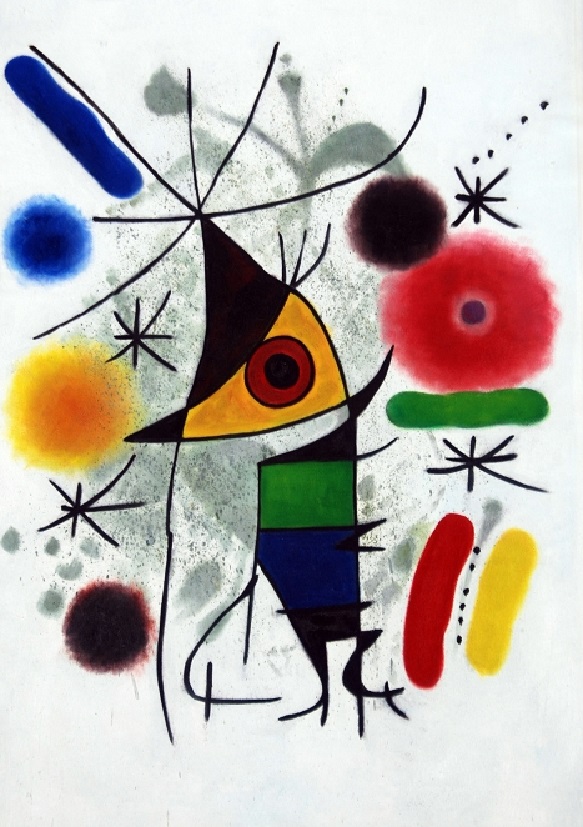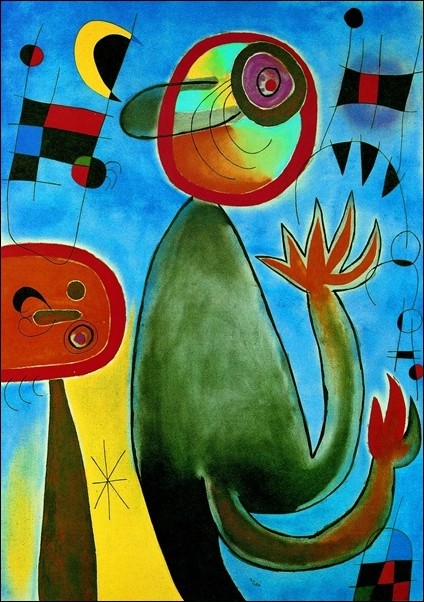Joan Miró (1893 –1983) was a Spanish painter, sculptor, and ceramicist born in Barcelona. A museum dedicated to his work, the Fundació Joan Miró, was established in his native city of Barcelona in 1975, and another, the Fundació Pilar i Joan Miró, was established in his adoptive city of Palma de Mallorca in 1981.
Earning international acclaim, his work has been interpreted as Surrealism but with a personal style, sometimes also veering into Fauvism and Expressionism. He was notable for his interest in the unconscious or the subconscious mind, reflected in his re-creation of the childlike. His difficult to classify works also had a manifestation of Catalan pride. In numerous interviews dating from the 1930s onwards, Miró expressed contempt for conventional painting methods as a way of supporting bourgeois society, and declared an "assassination of painting" in favour of upsetting the visual elements of established painting.(Wikipedia)
"Via his own Surrealism-inspired exploration, Miró invented a new kind of pictorial space in which carefully rendered objects issuing strictly from the artist's imagination became juxtaposed with basic, recognizable forms. His use of interior emotion to drive abstract expression would become a great influence on the Abstract Expressionists.Even though he pared his forms to abstract schematics or pictorial signs and gestures Miró's art never settled into complete non-objectivity. Rather, he devoted his career to exploring various means by which to dismantle traditional precepts of representation.Miró balanced the kind of spontaneity and automatism encouraged by the Surrealists with meticulous planning and rendering to achieve finished works that, because of their precision, seemed plausibly representational despite their considerable level of abstraction.Miró often worked with a limited palette, yet the colors he used were bold and expressive. His chromatic explorations, which emphasized the potential of fields of unblended color to respond to one another, as well as his flat backgrounds with mild gradations of color, were valuable resources, providing inspiration for Color Field painters such as Helen Frankenthaler.Miró was a modern renegade who refused to limit himself to visual exploration in a single medium. While he explored certain themes such as that of Mother and Child repeatedly throughout his long career, he did so in a variety of media from painting and printmaking to sculpture and ceramics, often achieving surprising and disparate results."(theartstory.org)\
Inspirations

































































